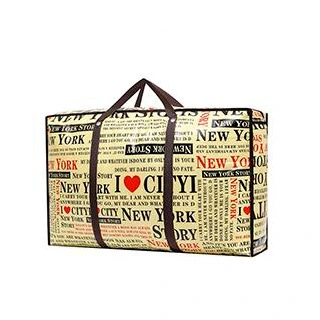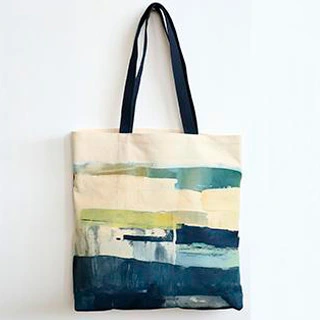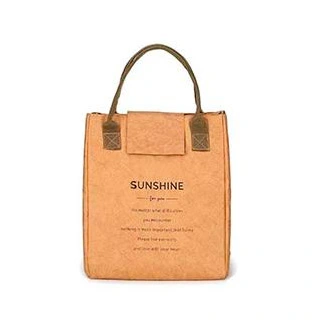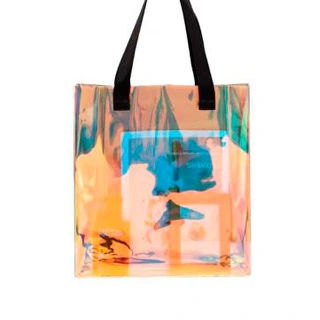Discover our Wholesale Shopping Bag Materials, ideal for large-scale retail or business needs. Our materials are durable, high-quality, and available in a variety of colors and textures. With our wholesale options, you can enjoy significant savings while ensuring your bags are stylish, practical, and sustainable. Customize to your heart's content and elevate your packaging game.

Plastic is a lightweight and flexible material that is commonly used for making bags. It is known for its durability, water resistance, and affordability. Plastic bags are widely popular due to their versatility and convenience. They come in various sizes, shapes, and colors, catering to different needs and preferences. Plastic bags are commonly used for shopping, storage, and transportation. However, it is important to note that the environmental impact of plastic bags has raised concerns, leading to the promotion of more sustainable alternatives.

Canvas, a popular material for bag making, is woven from sturdy cotton or linen fibers. Known for its durability and strength, canvas bags are highly sought after for their longevity and ability to withstand heavy loads. Additionally, canvas is an eco-friendly alternative to plastic bags, making it a sustainable choice for environmentally conscious individuals.

Non-woven fabric is a versatile material commonly used in bag manufacturing. Produced by bonding fibers together without the need for weaving, it offers excellent strength, breathability, and durability. Non-woven bags are lightweight, tear-resistant, and recyclable, making them an environmentally friendly choice. These bags are popular for their affordability and wide range of color options, ideal for promotional events and everyday use.

Dupont paper, also known as tyvek paper, is a unique and innovative material used in bag production. Made from high-density polyethylene fibers, it offers a combination of strength, tear resistance, and water repellency. Dupont paper bags are lightweight, eco-friendly, and recyclable. They are appreciated for their durability and ability to withstand various weather conditions, making them ideal for outdoor activities and adventure sports.

Jute, a natural fiber derived from the jute plant, is a popular material for bag making. It is known for its eco-friendly and biodegradable properties. Jute bags are durable, strong, and can carry heavy loads. They are highly sought after for their natural and rustic look. Jute bags are widely used for shopping, packaging, and promotional purposes, offering a sustainable and stylish alternative to plastic bags.

PP woven, short for polypropylene woven fabric, is a commonly used material in bag manufacturing. Made from polypropylene fibers, it is known for its exceptional strength, durability, and resistance to tearing. PP woven bags are lightweight, moisture-resistant, and reusable. They are widely used for packing agricultural products, construction materials, and various goods. With their versatility and affordability, PP woven bags are a popular choice for both commercial and personal use.
1. Durability: Dupont paper is known for its exceptional durability. It is resistant to tearing and can withstand rough handling, making it ideal for various applications.
2. Water-resistant: Dupont paper has a certain degree of water resistance, allowing it to withstand light moisture without getting damaged. This makes it suitable for outdoor or humid environments.
3. Eco-friendly: Dupont paper is a sustainable and recyclable material. It is made from natural fibers, such as cellulose, which are renewable resources. This makes it an environmentally friendly choice compared to other synthetic materials.
4. Lightweight: Dupont paper is lightweight, making it easy to handle and transport. This characteristic is beneficial for applications where weight is a concern, such as in packaging or paper-based products.
5. Versatility: Dupont paper is highly versatile and can be used in various applications, including packaging, crafting, printing, and writing. It can be easily folded, cut, or manipulated to suit different needs.
6. Printable: Dupont paper can be printed on using various printing techniques, such as offset, screen printing, or digital printing. This allows for customization and branding opportunities on the paper surface.
7. Texture: Dupont paper has a unique texture that adds visual appeal and enhances the tactile experience. It can have a smooth or slightly rough surface, depending on the specific type or finish.
Overall, Dupont paper offers a combination of durability, water resistance, eco-friendliness, lightweightness, versatility, printability, and texture, making it a favored choice for many applications in various industries.
Plastic and PP woven materials are commonly used for different applications, including bags. Here are some key points comparing the two:
1. Composition: Plastic bags are typically made from various types of synthetic polymers, such as polyethylene (PE) or polyvinyl chloride (PVC). PP woven bags, on the other hand, are made from woven polypropylene (PP) fabric, which provides better strength and durability.
2. Strength and Durability: PP woven bags offer higher strength and durability compared to plastic bags. The woven structure of PP woven material provides excellent tear resistance and load-bearing capacity, making it suitable for carrying heavy items. Plastic bags, however, tend to be thinner and less durable, making them more prone to tearing or ripping.
3. Reusability: PP woven bags are designed for multiple uses and are therefore reusable. They can withstand repeated use without significant wear and tear. Plastic bags, on the other hand, are often considered single-use items, contributing to environmental concerns such as plastic waste.
4. Environmental Impact: PP woven bags are considered more environmentally friendly than plastic bags. PP is a recyclable material that can be repurposed into new products. Plastic bags, especially single-use ones, have a significant environmental impact due to their persistence in the environment and contribution to pollution.
5. Customizability: Both plastic and PP woven bags can be customized with branding or designs through printing processes. However, PP woven bags offer more options for customization due to their fabric-like texture and ability to apply various printing techniques.
6. Cost: Plastic bags tend to be more affordable than PP woven bags. The cost-effectiveness of PP woven bags comes from their durability and reusability, which can offset the initial higher price in the long run.
In summary, PP woven bags offer better strength, durability, and reusability compared to plastic bags. They are considered more environmentally friendly, although they are generally more expensive. Plastic bags, while more affordable, lack the durability and long-term sustainability of PP woven bags. The choice between the two depends on factors such as the intended use, durability requirements, and environmental considerations.
